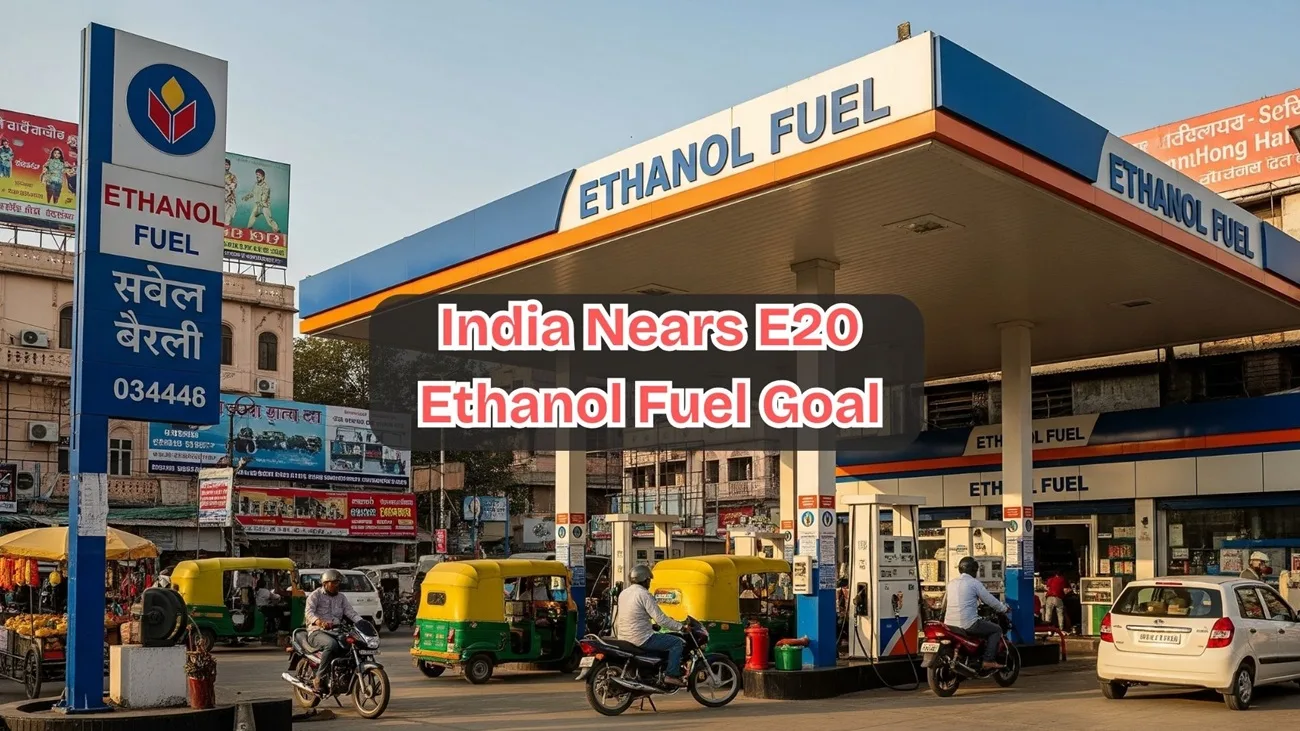India is moving fast towards its ethanol blending target, and the industry has appreciated the success of reaching 20% ethanol blending (E20) with petrol ahead of the 2025 deadline. However, experts also raised key challenges that need attention before going all-in with higher ethanol blends.
At the World Biofuel Day 2025 event, industry leaders praised the progress but highlighted real-world issues like mileage drop, vehicle compatibility, and the impact on older vehicles.
Let’s understand in simple language what E20 means, the benefits, and the problems we still need to fix.
⚙️ What Is E20 Fuel?
- E20 fuel is petrol that contains 20% ethanol and 80% petrol.
- Ethanol is a cleaner, renewable fuel made mostly from sugarcane or grains.
- It helps in reducing carbon emissions and lowers the country’s fuel import bill.
✅ Benefits of E20 Blending
Here are the key advantages of E20:
- Lower Pollution – Ethanol burns cleaner than petrol, reducing air pollution.
- Less Import of Crude Oil – Saves foreign exchange by reducing petrol dependency.
- Boost to Farmers – Ethanol is made from crops like sugarcane, which helps farmers earn more.
- Cheaper Fuel Option – Ethanol is cheaper than petrol, making E20 more affordable in the long run.
🔧 Technical Challenges of E20 Fuel
Even though the idea of E20 is great, it comes with some technical problems, especially for older vehicles.
🔍 Real-World Issues Highlighted by Experts:
🔸 1. Drop in Mileage
- According to NITI Aayog’s Energy Adviser Rajnath Ram, fuel efficiency drops:
- 2–3% in newer vehicles
- Up to 6% in older models
- This could increase fuel expenses for consumers.
🔸 2. Material Compatibility
- Ethanol has a corrosive nature, which can damage rubber parts, gaskets, and fuel systems in older vehicles.
- Although BIS standards ask for corrosion-resistant materials, low-cost older vehicles may still need gasket/rubber replacement.
🔸 3. Lack of E20-Ready Vehicles
- Many vehicles on Indian roads, especially two-wheelers and small cars made before 2023, are not fully E20 compliant.
- Using E20 in these can lead to performance issues or engine damage over time.
🧪 What Industry Leaders Say
🗣️ Rajnath Ram, Adviser (Energy), NITI Aayog
- No abnormal wear and tear seen up to 1 lakh kilometres on E20-compliant vehicles.
- The drop in mileage is minor, but needs to be addressed jointly by government and industry.
🗣️ Puneet Anand, AVP, Hyundai Motor India
- Modern vehicles have in-built safety tolerances for such fuel changes.
- However, the industry has requested the government to provide protection-grade fuel for older vehicles.
- Consultations are ongoing to help both automakers and consumers transition smoothly.
🚘 Way Forward – What Needs to Be Done?
To make E20 fuel successful and safe for all Indian users, some steps need to be taken:
✅ Recommended Actions:
- Awareness Campaigns – Educate users about E20-compatible vehicles and potential mileage changes.
- Protection Grade Fuel – Make E10 fuel available for older vehicles during the transition.
- Support for Upgrades – Help users replace rubber parts or gaskets in older vehicles at affordable costs.
- Clear Labelling at Fuel Pumps – Mention clearly whether it is E10 or E20 to avoid confusion.
- Further R&D – Encourage automakers to keep improving engine performance with ethanol blends.
✅ Conclusion: E20 – A Great Step With Caution
While the achievement of E20 blending milestone is a big win for India’s clean energy goals, real-world concerns cannot be ignored. Consumers, especially those with older vehicles, need proper support and information during this transition.
With joint efforts by the government, automakers, and fuel companies, India can successfully adopt higher ethanol blends without hurting vehicle performance or consumer confidence.




